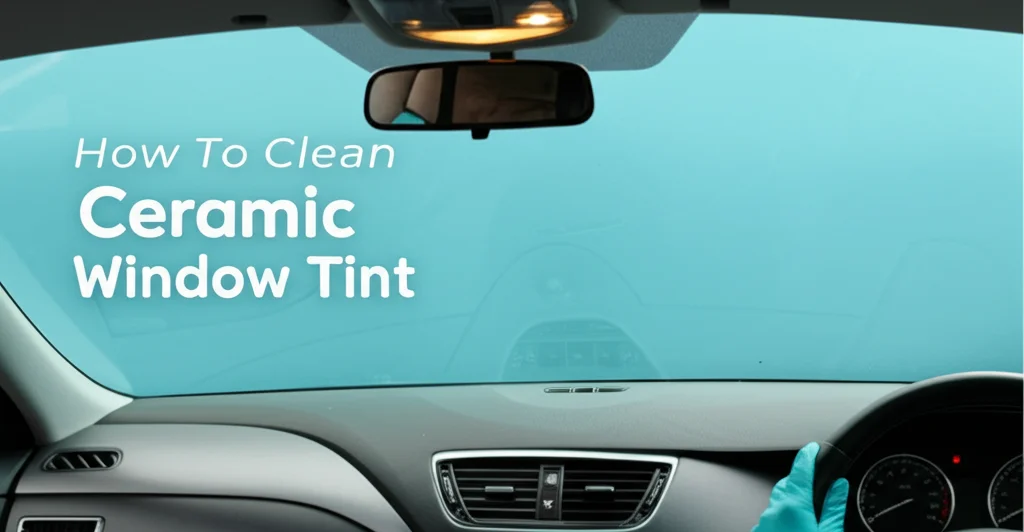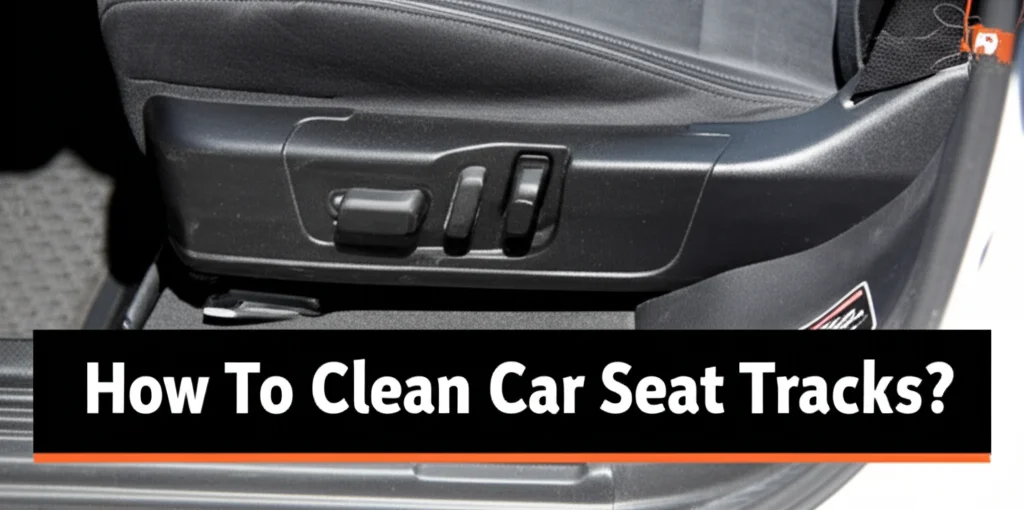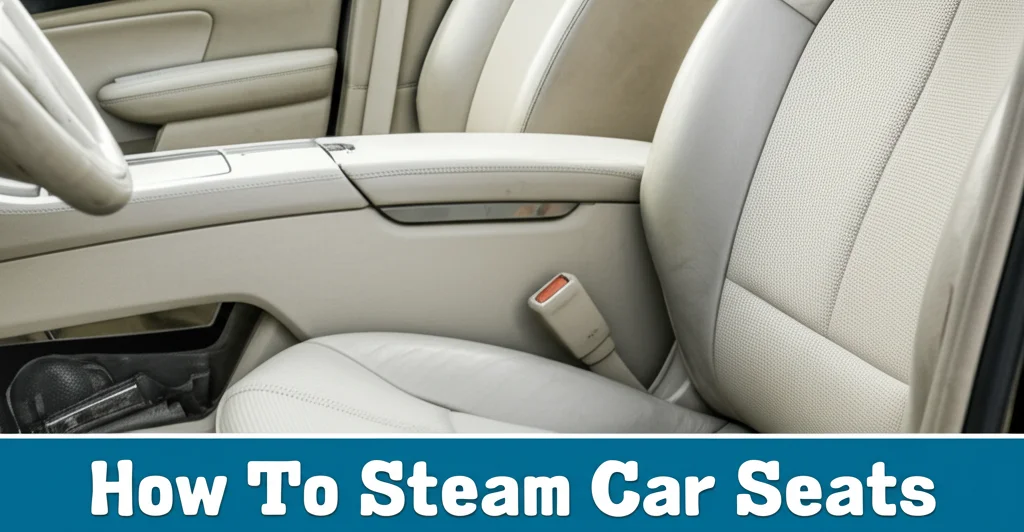· Auto Detailing · 7 min read
How To Clean Ventilated Car Seats

Keeping Cool & Clean: How To Clean Ventilated Car Seats
Have you invested in a car with ventilated seats for ultimate driving comfort? These seats circulate air to keep you cool, but they can also trap dirt, dust, and spills. Cleaning ventilated car seats requires a little extra care to avoid damaging the delicate internal components. This article will guide you through the best methods for cleaning and maintaining your ventilated car seats, ensuring they stay fresh and functional for years to come. We’ll cover everything from routine vacuuming to tackling stubborn stains, keeping your car interior looking its best.
Quick Answer: To clean ventilated car seats, gently vacuum the surface and vents, spot-clean with a mild upholstery cleaner, and use a soft brush to work the cleaner into the fabric or leather. Avoid excessive moisture and always test cleaners in an inconspicuous area first.
Takeaway:
- Regular vacuuming prevents dirt buildup.
- Spot cleaning addresses spills quickly.
- Gentle cleaners protect the ventilation system.
- Avoid saturating the seats with liquid.
Understanding Your Ventilated Car Seats
Before diving into cleaning, it’s important to understand what you’re dealing with. Ventilated car seats aren’t just standard seats with fans; they have a complex system of perforations and internal ducts. These ducts pull air from the cabin and circulate it through the seat, providing cooling. This design means that debris can easily enter the system, potentially causing blockages or unpleasant odors. Knowing this helps you choose the right cleaning methods and avoid damage. Different materials, like leather or fabric, also require different approaches.
Leather vs. Fabric: Knowing Your Seat Material
The cleaning process differs significantly depending on whether your ventilated seats are leather or fabric. Leather seats require specialized leather cleaners and conditioners to maintain their suppleness and prevent cracking. Fabric seats, on the other hand, can typically be cleaned with a mild upholstery cleaner. Always check your car’s owner’s manual to confirm the material of your seats and any specific cleaning recommendations from the manufacturer. Using the wrong product can cause irreversible damage.
The Importance of Gentle Cleaning
Because of the ventilation system, it’s crucial to avoid getting excessive moisture inside the seats. Water can damage the electrical components and promote mold growth. Gentle cleaning methods, using minimal liquid and focusing on spot cleaning, are always the best approach. Think of it like cleaning a delicate electronic device – you want to remove the dirt without causing any internal harm.
Routine Maintenance: Keeping Seats Fresh
Consistent, light cleaning is far more effective than infrequent, deep cleaning. Establishing a routine will prevent dirt and grime from building up and becoming difficult to remove. This also minimizes the risk of clogging the ventilation system. A little effort each week can save you a lot of time and trouble in the long run.
Weekly Vacuuming: The First Line of Defense
Vacuuming your ventilated seats weekly is the single most important thing you can do to keep them clean. Use a brush attachment to gently remove loose dirt, dust, and debris from the surface and, importantly, from the perforations. Pay special attention to the seams and crevices where dirt tends to accumulate. A crevice tool can be particularly helpful for reaching tight spaces. You can find more information on general car interior cleaning here.
Spot Cleaning Spills Immediately
Accidents happen! If you spill something on your ventilated seats, address it immediately. Blot the spill with a clean, absorbent cloth, working from the outside in to prevent it from spreading. Avoid rubbing, as this can push the stain deeper into the material. For minor spills, a damp cloth may be sufficient.
Deep Cleaning Ventilated Car Seats: Step-by-Step
When routine maintenance isn’t enough, a more thorough cleaning is necessary. This involves using specialized cleaners and techniques to remove stubborn stains and refresh the entire seat surface. Remember to always test any cleaning product in an inconspicuous area first to ensure it doesn’t cause discoloration or damage.
Step 1: Vacuum Thoroughly
Before applying any cleaning solution, vacuum the seats thoroughly, as described above. This removes loose debris and prepares the surface for cleaning. Use a strong vacuum with a brush attachment and pay attention to the ventilation perforations.
Step 2: Choose the Right Cleaner
- For Leather Seats: Use a pH-balanced leather cleaner specifically designed for automotive use. Avoid harsh chemicals or abrasive cleaners.
- For Fabric Seats: Use a mild upholstery cleaner that is safe for car interiors. Avoid cleaners containing bleach or strong solvents.
Step 3: Apply and Work in the Cleaner
Apply the cleaner to a clean microfiber cloth, not directly onto the seat. Gently work the cleaner into the fabric or leather using a soft brush. For leather, use a soft-bristled brush in a circular motion. For fabric, use a brush to agitate the cleaner and lift dirt. Avoid saturating the seats with liquid.
Step 4: Wipe Clean and Dry
Wipe away the cleaner with a clean, damp microfiber cloth. Rinse the cloth frequently in clean water. Once the seats are clean, allow them to air dry completely. Avoid using a hairdryer or other heat source, as this can damage the material. If you’re dealing with stubborn stains on other surfaces, you might find this guide on removing baking soda residue helpful: https://www.beacleaner.com/how-to-remove-baking-soda-residue-from-carpet/.
Step 5: Leather Conditioning (For Leather Seats)
After cleaning leather seats, apply a leather conditioner to restore moisture and prevent cracking. Follow the manufacturer’s instructions for application. This step is crucial for maintaining the health and appearance of your leather seats.
Addressing Specific Stains
Different types of stains require different approaches. Here’s how to tackle some common culprits:
Oil-Based Stains
For oil-based stains, such as food grease or lotion, sprinkle baking soda onto the stain and let it sit for 30 minutes to absorb the oil. Vacuum up the baking soda and then clean the area with a mild upholstery cleaner.
Water-Based Stains
Water-based stains, like coffee or juice, can usually be removed with a damp cloth and a mild upholstery cleaner. Blot the stain gently and avoid rubbing.
Ink Stains
Ink stains can be tricky. Try dabbing the stain with rubbing alcohol on a cotton swab. Blot gently and avoid spreading the ink. You may need to repeat this process several times.
Maintaining the Ventilation System
The ventilation system itself requires occasional attention to ensure optimal performance. Dust and debris can accumulate inside the ducts, reducing airflow and potentially causing odors.
Checking and Cleaning the Air Vents
Periodically inspect the air vents for any visible debris. Use a small brush or compressed air to remove any obstructions. Be careful not to push debris further into the system.
Using an Air Freshener
To keep the air circulating through your ventilated seats fresh, use a car air freshener. Choose a scent that you enjoy and avoid overpowering fragrances.
Frequently Asked Questions (FAQs)
Q: Can I use a steam cleaner on ventilated car seats?
A: Generally, no. The excessive moisture from a steam cleaner can damage the internal components of the ventilation system. Stick to gentle cleaning methods with minimal liquid.
Q: How often should I deep clean my ventilated car seats?
A: Deep cleaning should be done every 6-12 months, depending on usage and how often you vacuum.
Q: What if my ventilated seats still smell after cleaning?
A: If odors persist, try using an odor eliminator specifically designed for car interiors. You may also need to check and clean the air vents.
Q: Is it safe to use household cleaners on my car seats?
A: No, household cleaners often contain harsh chemicals that can damage car upholstery. Always use cleaners specifically designed for automotive use.
Conclusion: Enjoying Long-Lasting Comfort
Cleaning ventilated car seats doesn’t have to be a daunting task. By following these simple steps and establishing a routine maintenance schedule, you can keep your seats looking and feeling their best for years to come. Remember to prioritize gentle cleaning methods, avoid excessive moisture, and always test cleaners in an inconspicuous area first. Maintaining your ventilated seats will not only enhance your driving comfort but also preserve the value of your vehicle. So, take the time to care for your seats, and enjoy the cool, comfortable ride! If you’re looking for more ways to keep your car interior spotless, consider exploring tips on cleaning car carpets here.




